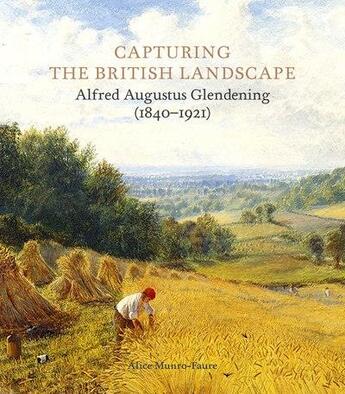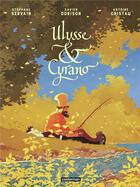-
Date de parution : 02/12/2022
-
Editeur :
Paul Holberton
-
EAN : 9781913645236
-
Série :
(-)
-
Support :
Papier
Résumé:
This book presents the life and work of the Victorian landscape painter Alfred Augustus Glendening (1840-1921). With beautiful illustrations of his pictures, showing a timeless countryside, it explores Glendening's rapid rise from railway clerk to acclaimed artist. Whilst critics often reviewed... Voir plus
This book presents the life and work of the Victorian landscape painter Alfred Augustus Glendening (1840-1921). With beautiful illustrations of his pictures, showing a timeless countryside, it explores Glendening's rapid rise from railway clerk to acclaimed artist. Whilst critics often reviewed his exhibited works, very little has been written about the artist himself. Here, new and extensive research removes layers of mystery and misinformation about his life, family and career, accurately placing him in the midst of the British art world during much of the nineteenth and into the twentieth century. Glendening was a man from humble origins, working fulltime as a railway clerk, yet was able to make his London exhibition debut at the age of twenty. This would have been almost impossible before the Victorian era, an extraordinary period when social mobility was a real possibility. Although his paintings show a tranquil and unspoiled landscape, his environment was rapidly being transformed by social, scientific and industrial developments, while advances in transport, photography and other technical discoveries undoubtedly influenced him and his fellow painters. Celebrating his uniquely Victorian story, the book places Glendening within his historical context. Running alongside the main text is a timeline outlining significant landmarks, from political and social events to artistic and technical innovations. Thoroughly researched over many years, the narrative explores why and for whom he painted, his artistic training and inspirations. Painting at Hampton and Greenwich, beside the River Thames, Glendening soon discovered the Welsh hills and became a member of the Bettws-y-Coed Artists' Colony, founded by David Cox. His masterful landscapes also include views of the Scottish Highlands, the Lake District, the Norfolk Broads, the South Downs and the Isle of Wight. The book uncovers new information about the Victorian art world and embraces such aspects as Royal Academy prejudices, the popularity of Glendening's work at home and abroad, especially Australia and America, his use of photography, and the sourcing of his art materials. Family trees are included, and other artistic family members discussed, notably his son and pupil Alfred Illman Glendening (1861-1907). There is a comprehensive list of their exhibited works at the Royal Academy and other major institutions, and details of their paintings in public collections.
Donner votre avis














